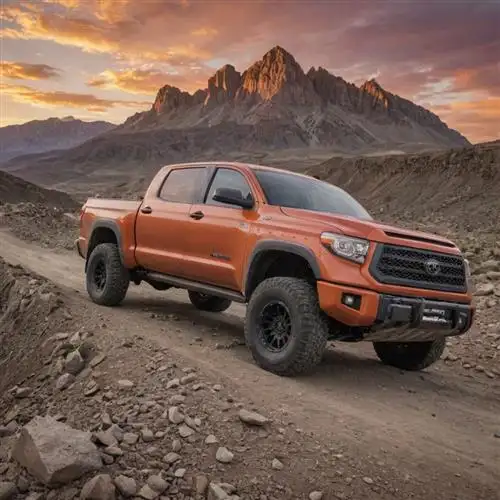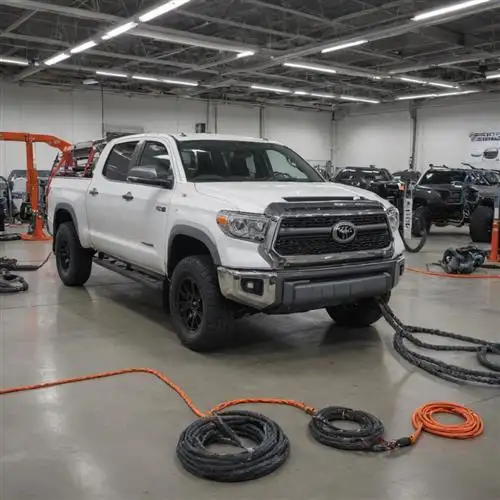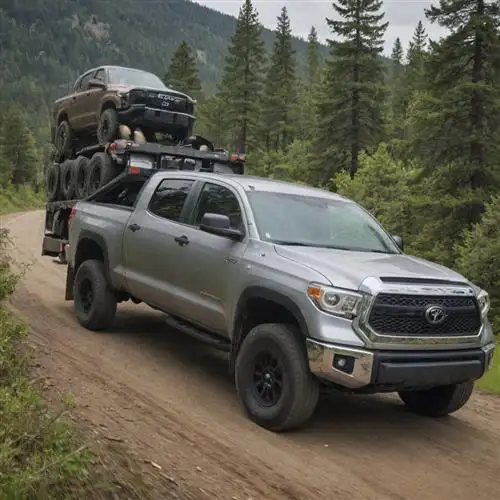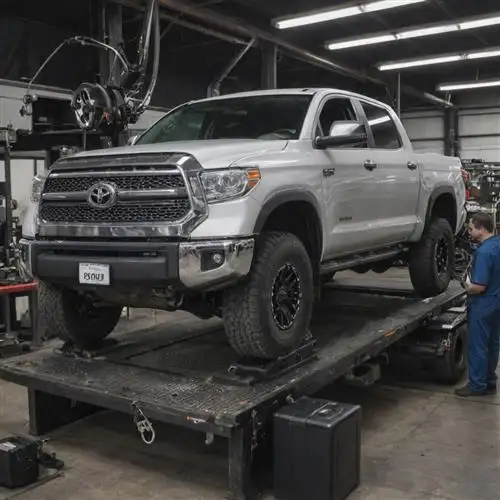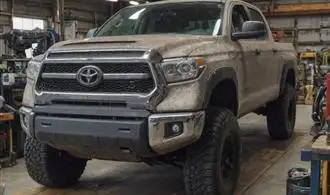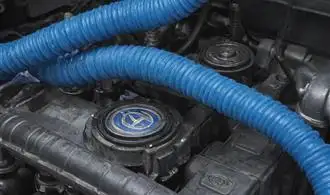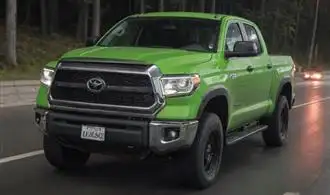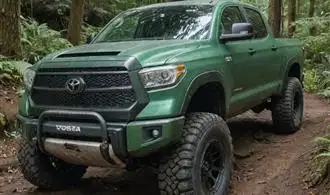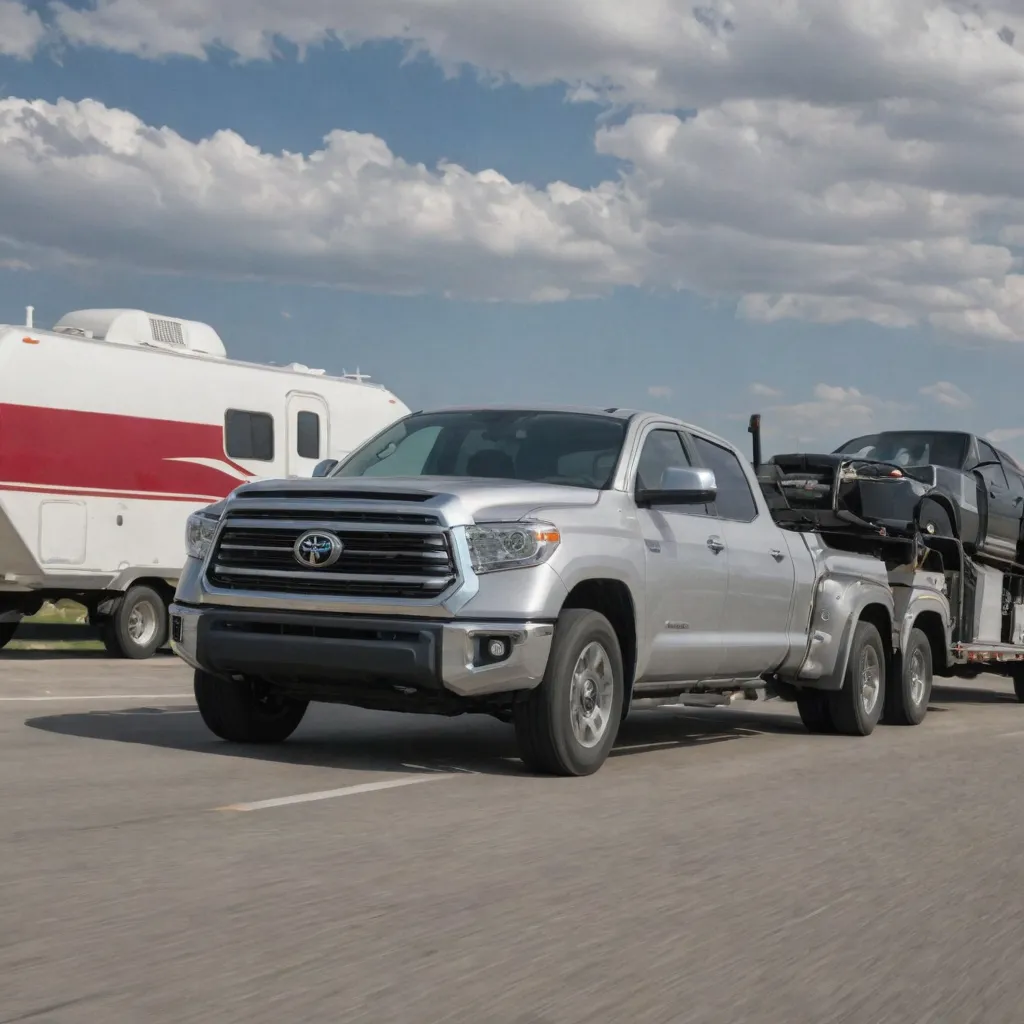
Tundra's Towing Capacity Revealed
The Toyota Tundra is a powerhouse when it comes to towing, and its impressive capabilities are a testament to the engineering prowess of the Japanese automaker. At the heart of the Tundra's towing prowess lies its robust frame, powerful engine options, and advanced towing technologies. Understanding the Tundra's towing capacity is crucial for anyone planning to haul heavy loads, whether it's a boat, a trailer, or a hefty load of equipment.
The Tundra's towing capacity varies depending on the specific model and configuration, but the top-of-the-line version can tow up to 12,000 pounds. This staggering capability is achieved through a combination of factors, including the Tundra's available 5.7-liter V8 engine, which delivers an impressive 381 horsepower and 401 lb-ft of torque. The engine's robust design, paired with a heavy-duty transmission and a sturdy rear axle, ensures that the Tundra can tackle even the most demanding towing tasks with ease.
Beyond the engine and drivetrain, the Tundra also features several advanced towing technologies that enhance its towing capabilities. One such feature is the Trailer Sway Control system, which monitors the motion of the trailer and applies brake pressure to the individual wheels to help stabilize the trailer and prevent sway. Additionally, the Tundra's available Tow/Haul mode optimizes the transmission's shifting to provide better control and responsiveness when towing heavy loads.
Another important consideration when towing with the Tundra is the vehicle's payload capacity. The Tundra can carry up to 1,730 pounds of payload, which includes the weight of passengers, cargo, and any equipment or accessories installed in the truck. It's crucial to carefully plan the weight distribution and not exceed the Tundra's maximum payload rating to ensure safe and stable towing.
Towing Accessories for the Tundra
Towing accessories are essential for Toyota Tundra owners who need to haul heavy loads. From hitch-mounted cargo carriers to gooseneck hitches, the right accessories can transform the Tundra into a powerful towing machine. One of the most critical towing accessories is the trailer hitch. The Tundra offers a variety of hitch options, including a standard receiver hitch, a fifth-wheel hitch, or a gooseneck hitch. Each type of hitch has its own advantages, and the choice will depend on the size and weight of the trailer being towed.
For owners who need to tow large, heavy trailers, a gooseneck hitch is an excellent option. Gooseneck hitches attach directly to the truck's frame, providing a stronger and more stable connection. This can be especially useful for hauling large fifth-wheel RVs or horse trailers. In addition to the hitch itself, gooseneck towing also requires a specialized hitch ball and a compatible trailer with a gooseneck coupling.
Another essential towing accessory for the Toyota Tundra is a weight distribution hitch. This device helps to distribute the weight of the trailer more evenly across the Tundra's suspension, improving handling and stability. Weight distribution hitches are particularly important when towing heavy trailers, as they can help prevent the rear of the truck from sagging and improve the overall towing experience.
Trailer brake controllers are another must-have towing accessory for Tundra owners. These devices allow the driver to control the brakes on the trailer from the cab of the truck, ensuring smoother and safer stops. Many Tundra models come equipped with pre-wired trailer brake connections, making it easy to install a brake controller.
In addition to these essential towing accessories, Tundra owners may also want to consider adding a hitch-mounted cargo carrier or a towing mirror to their vehicle. Cargo carriers can provide extra storage space for gear or supplies, while towing mirrors can improve visibility and safety when hauling a trailer.
Tundra Towing Techniques for the Pro
When it comes to towing heavy loads, the Toyota Tundra is a powerhouse. Its robust chassis, powerful engines, and advanced towing features make it a top choice for those who need to haul trailers, boats, or other large cargo. However, mastering the art of towing with the Tundra requires more than just raw power. Proper technique and attention to detail are essential to ensure safe, efficient, and comfortable towing experiences.
One of the key factors in successful Tundra towing is weight distribution. Ensuring that the load is properly balanced, with the majority of the weight over the Tundra's rear axle, is crucial for maintaining stability and control. This can be achieved by carefully loading the trailer or cargo, and by utilizing the Tundra's integrated trailer sway control system. This advanced feature automatically detects and corrects trailer sway, providing a smooth and stable towing experience, even in high winds or on uneven terrain.
Another important aspect of towing with the Tundra is proper hitching and trailer setup. Ensuring that the trailer is properly connected and secured to the Tundra's hitch is essential for safe towing. This includes checking the hitch, safety chains, and electrical connections to ensure they are all in good working order. Additionally, proper trailer loading and balancing can help to minimize the risk of sway and improve overall handling.
When it comes to driving technique, towing with the Tundra requires a more cautious and deliberate approach. Maintaining a safe following distance, being aware of the increased braking distance, and avoiding sudden maneuvers are all important considerations. Additionally, utilizing the Tundra's tow/haul mode, which adjusts the transmission and engine response to optimize for towing, can help to improve fuel efficiency and reduce the strain on the powertrain.
Finally, it's important to keep in mind the Tundra's towing capacity and payload limits. Overloading the Tundra can not only compromise its performance and handling, but also put the driver and others on the road at risk. By carefully calculating the weight of the trailer and cargo, and staying within the Tundra's towing and payload specifications, users can ensure a safe and successful towing experience.
Maintaining Tundra's Towing Performance
Ensuring optimal towing performance from your Toyota Tundra requires a multi-faceted approach. Regular maintenance and proactive steps can help you maximize the truck's capabilities and prevent any unwelcome surprises on the road. Let's dive into the essential aspects of maintaining your Tundra's towing prowess.
Routine Inspections and Maintenance: Adhering to the manufacturer's recommended service schedule is crucial. This includes regular oil changes, filter replacements, and inspections of critical components like the engine, transmission, and suspension. Staying on top of these routine tasks can help identify potential issues early and keep your Tundra running at its best.
Towing-Specific Maintenance: Beyond the standard maintenance, there are specific checks and services tailored for towing. Ensure that your Tundra's hitch system, trailer connections, and wiring are in pristine condition. Inspect the brakes, tires, and wheel bearings regularly, as these components bear the brunt of the additional load during towing. Proper lubrication and adjustments can extend their lifespan and enhance your towing experience.
Payload and Towing Capacity Management: Understanding your Tundra's towing and payload capacities is paramount. Carefully calculate the combined weight of your vehicle, the trailer, and the cargo to ensure you stay within the recommended limits. Overloading can compromise handling, braking, and fuel efficiency, potentially leading to dangerous situations on the road.
Towing Accessories and Upgrades: Investing in high-quality towing accessories can make a significant difference in your Tundra's towing performance. Consider upgrading components like the trailer brake controller, load-distributing hitch, or transmission cooler to enhance the truck's towing capabilities and provide an added layer of safety and control.
Driving Techniques for Towing: Developing proper driving techniques is essential when towing with your Tundra. Maintain a slower, more cautious speed, leave ample braking distance, and avoid sudden maneuvers. Carefully monitor your Tundra's stability and the trailer's behavior, making adjustments as needed to maintain control and safety.
Tundra Towing Safety Protocols
Towing with a Toyota Tundra requires meticulous attention to safety protocols to ensure a seamless and secure experience. The Tundra's robust towing capabilities demand responsible handling, and adhering to these guidelines can make all the difference in protecting both the vehicle and its cargo.
First and foremost, it's crucial to familiarize yourself with the Tundra's towing capacity, which can vary depending on the model, engine, and other factors. Refer to the owner's manual or consult with a Toyota dealer to determine the maximum weight your Tundra can safely tow. Never exceed this limit, as it can compromise the vehicle's handling, braking, and stability, potentially leading to dangerous situations.
Proper trailer hitching is essential for towing safety. Ensure the trailer's hitch is rated for the Tundra's towing capacity and is securely connected to the vehicle. Double-check that the safety chains are properly attached and that the trailer's brakes, lights, and turn signals are functioning correctly. Regularly inspect the hitch and connection points for any signs of wear or damage.
Load distribution is another critical aspect of towing safety. Distribute the weight of the trailer evenly, with the majority of the load positioned over the trailer's axles. This helps maintain proper weight balance and improve the Tundra's handling and stability. Avoid overloading the front or rear of the trailer, as this can lead to sway and loss of control.
Adjusting your driving style is crucial when towing a trailer with the Tundra. Increase following distances, reduce speeds, and be prepared for longer braking distances. Avoid sudden maneuvers, such as quick lane changes or abrupt braking, which can cause the trailer to sway or jackknife. Use lower gears when descending steep hills to maintain control and prevent the trailer from pushing the vehicle.
Regularly check the trailer's tires, suspension, and brakes to ensure they are in good condition and properly maintained. Ensure the trailer's tire pressure is within the recommended range, and replace any worn or damaged tires. Additionally, inspect the trailer's suspension components for any signs of wear or damage that could compromise stability.
Finally, be aware of the local and state regulations regarding towing, as they may vary. Familiarize yourself with requirements such as license endorsements, safety equipment, and any special considerations for the size or type of trailer you're towing.

